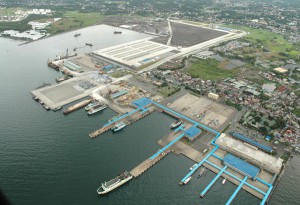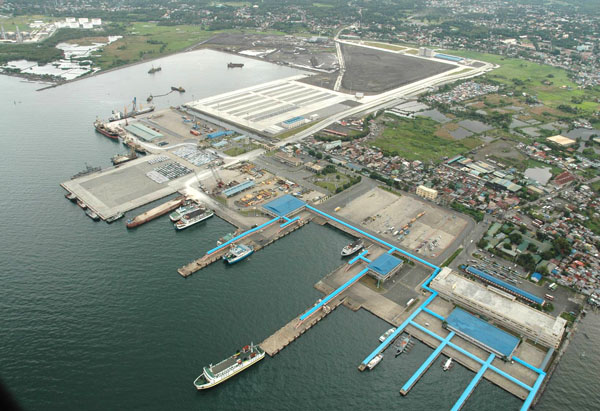
Operators and users of Manila’s ports said they remain unconvinced about shifting container cargoes to the Batangas and Subic ports to decongest the capital’s ports and Metro Manila streets.
The stakeholders outlined their views last week in a forum on the Manila port decongestion plan held by the Department of Justice (DOJ) and the Philippine Ports Authority (PPA) at the Sofitel Philippine Plaza Manila.
The plan to decentralize Manila ports is being pushed by PPA, as part of the government’s broader plan to disperse industries to boost economic activity in the regions.
Japanese investors in Batangas port, two hours south of the Philippine capital Manila, in particular are pressing the government to come up with a set of policies to increase usage of the gateway port, although Manila terminal operators who attended the forum said not one Japanese liner is calling at Batangas hub.
The stakeholders cited road infrastructure, costs, proximity to government offices, manufacturers and suppliers, and volume as some of their major concerns over the proposed shift to Batangas and Subic, three hours north of Manila.
They said the Philippines is a consumer-based economy with greater volume of imports than exports, and that where there is commerce, there is cargo volume.
“At the end of the day, the tankers in Subic are designed for industries located around them. They are not designed for the Metro Manila consumer base,” said Asian Terminals Inc. (ATI) executive vice president Andrew Hoad.
Port operators say the congestion in Manila ports can be resolved if the government intervenes by implementing laws against street vendors and illegal settlers around ports and providing better road infrastructure and truck holding areas.
“And I think we have to get away from this issue of solving one problem by creating another problem,” said Christian Gonzalez, vice president of International Container Terminal Services Inc. (ICTSI) and general manager of Manila International Container Terminal.
“It’s our responsibility and (the) government’s responsibility to look at these problems and provide them with solutions,” Gonzalez explained.
ICTSI subsidiary Subic Bay International Terminal Corp operates Subic Bay’s New Container Terminals 1 and 2.
Manila’s port operators agree that the solution is not to shift the cargoes, but create a better roadwork to ease the congestion.
“My vote is Port of Manila has got to stay, but (what) we have to do is improve the infrastructure,” said chief executive officer Richard Barclay of the Manila North Harbour Port Inc. (MNHPI), which operates the capital’s biggest domestic passenger and cargo port.
ATI operates the Batangas Container Terminal while ICTSI operates Subic Bay’s New Container Terminals 1 and 2.
The forum was attended by shipping industry stakeholders led by port operators ICTSI, ATI, and MMHPI; the Association of International Shipping Lines Inc., Philippine International Seafreight Forwarders Association, National Economic and Development Authority, Port Users Confederation Inc., Department of Trade and Industry, Japan International Cooperation Agency, truckers and freight forwarders.
The DOJ Office for Competition and the PPA, which jointly organized the forum, set out to prepare a study using inputs from all affected sectors and stakeholders and try to provide a doable solution to the port congestion problem.
The DOJ-PPA team said the study on volume is set to be completed by end-April, and a study on a proposed policy to address the problem should be completed in May.





